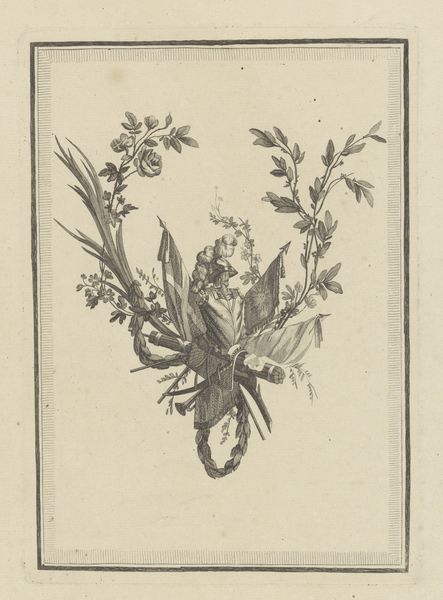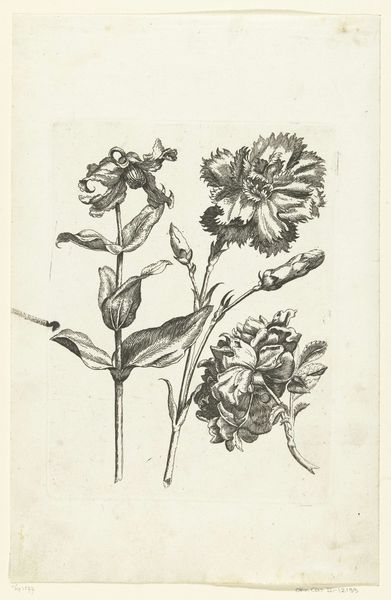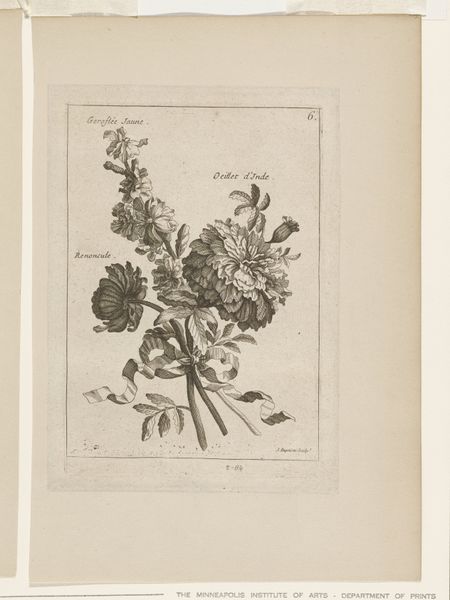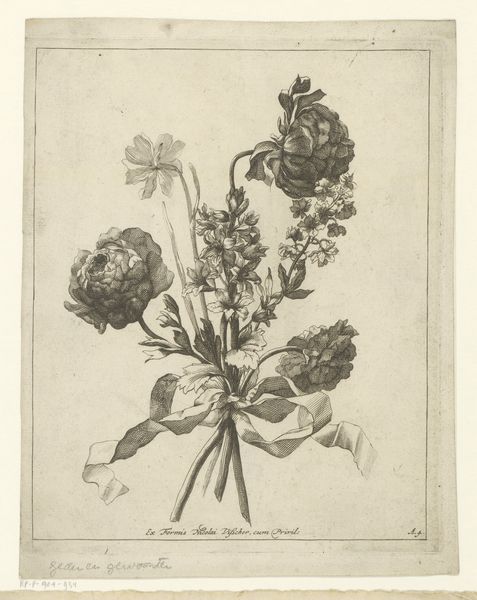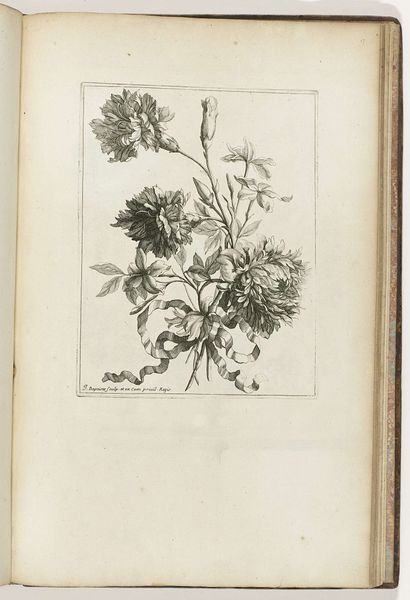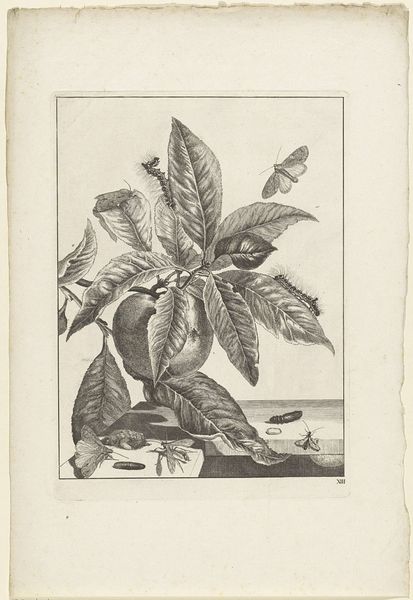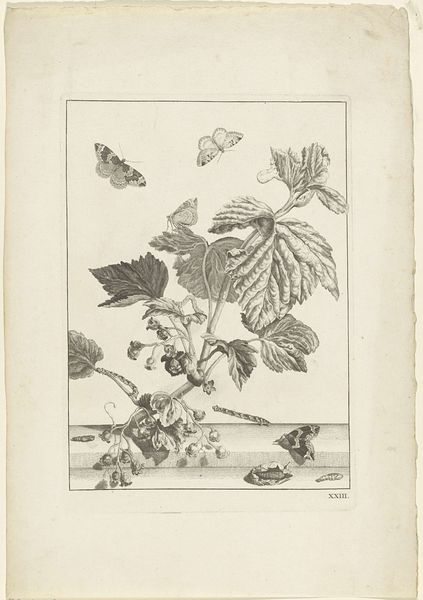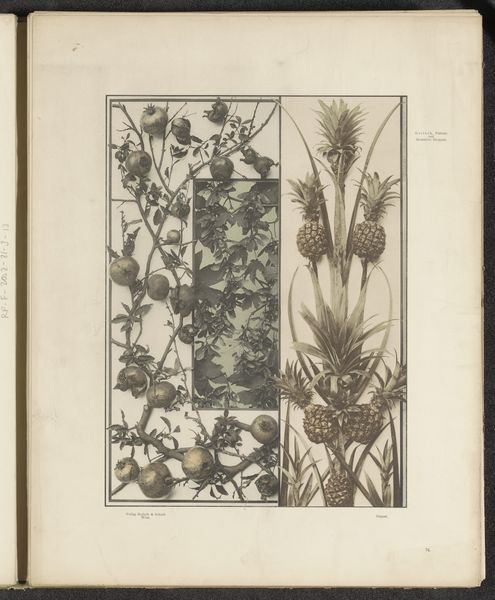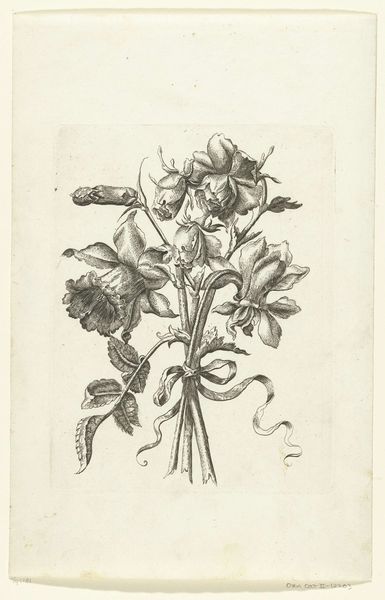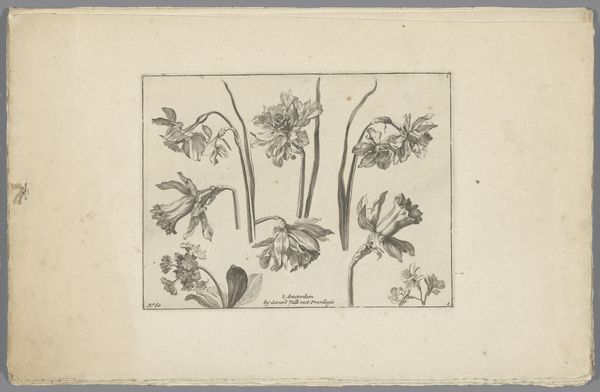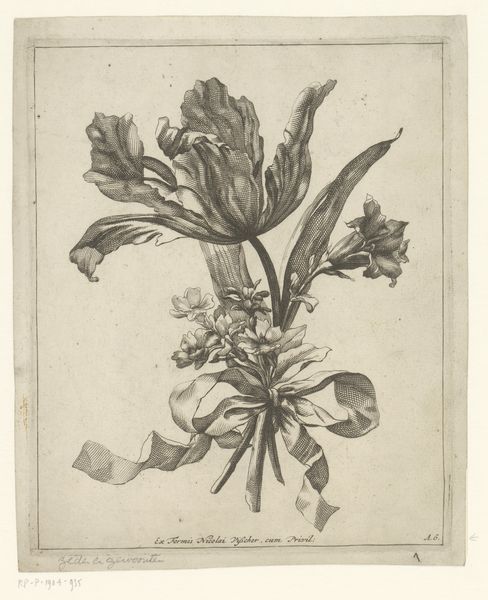
print, engraving
#
baroque
# print
#
engraving
Dimensions: height 280 mm, width 190 mm
Copyright: Rijks Museum: Open Domain
Curator: Welcome to the Rijksmuseum. We are standing before Jacob l'Admiral's print "Bloeiende plant met rupsen en vlinders," dating roughly between 1710 and 1774. It’s an engraving depicting a flowering plant teeming with life. Editor: My first impression is one of subtle decay coexisting with vibrant life. The stark contrasts hint at the transient nature of beauty, especially in how the artist meticulously etches the botanical details and tiny fauna. Curator: Precisely. l'Admiral’s choice to render this still life in meticulous engraved lines creates a study in contrasting textures and forms. The baroque botanical illustration feels almost scientific, cataloguing nature through detailed strokes. The use of print is essential; it allowed for broad distribution of these observations. Editor: This meticulous cataloguing echoes an era deeply engaged in scientific exploration, albeit colored by a hierarchical worldview. The arrangement reflects a perceived order, subtly reminding us of the human desire to organize and classify nature, often overshadowing nature's intrinsic agency. Who determined what gets "cataloged" and why? Curator: That's an astute point. The plant is undeniably the focus here. Note the flower's density and structure. The spiraling composition guides the viewer’s eye around the artwork, highlighting the complex arrangement of petals and leaves. Semiotically, it reads as nature rendered orderly. Editor: True, but those caterpillars, though seemingly minor details, can't be ignored. They represent change, cycles of life and decay, concepts frequently suppressed within dominant narratives obsessed with preserving an idealistic facade. Their presence speaks volumes about embracing rather than sanitizing natural processes. Curator: Indeed. And it speaks of metamorphosis, doesn’t it? In this medium, he is essentially fixing a moment in time, trying to illustrate this idea of transformation. There is great technical sophistication at play. Editor: Absolutely. By prompting these types of conversations, these images give us a chance to discuss the evolving relationship between humanity, art, and the wider ecosystem. Curator: It is an evocative depiction. Thank you for sharing your interpretation. Editor: And thank you. Looking again, I’m drawn to think more deeply about the artist and his world, but also about our contemporary view of nature as always separate. It’s all intertwined, and artworks like these remind us of that connectivity.
Comments
No comments
Be the first to comment and join the conversation on the ultimate creative platform.

